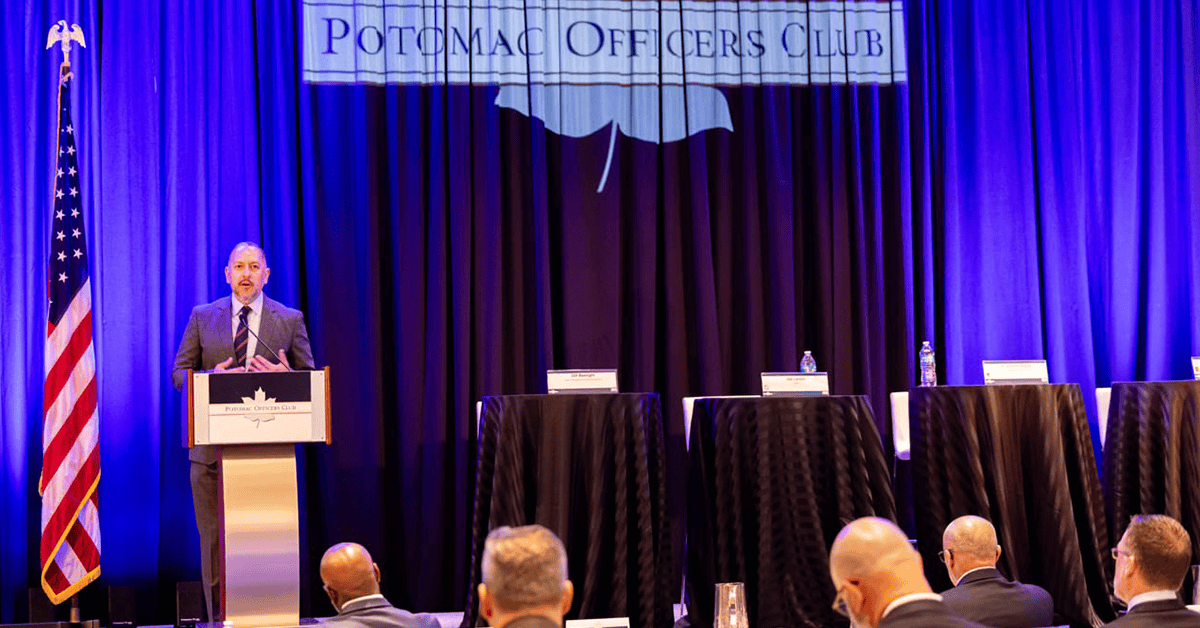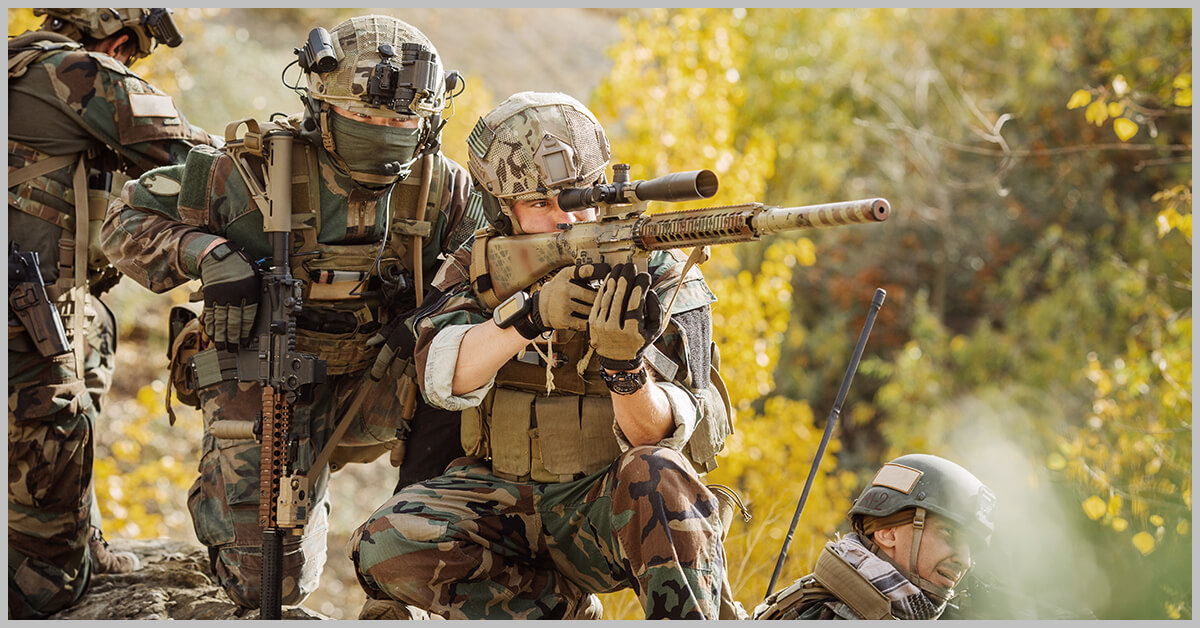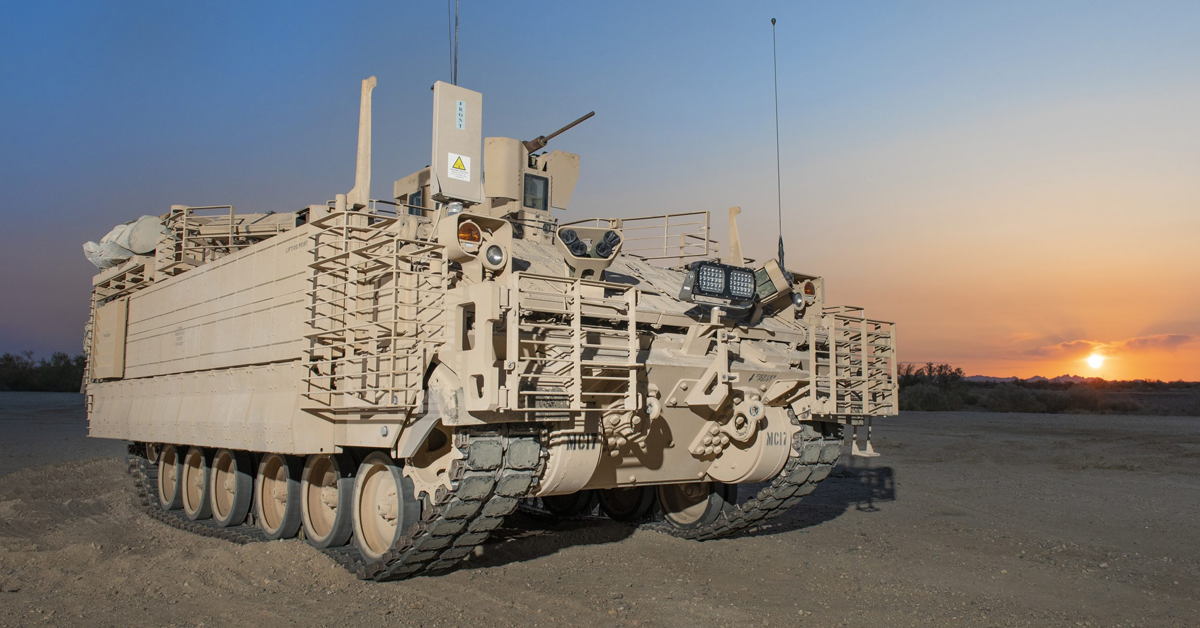Although the United States Army has been strategically prioritizing the “Army of 2030” recently, the service’s modernization goals don’t stop there. Today, Army leaders are looking even further into the future and preparing for fights well beyond the next decade.
During his keynote address at the Potomac Officers Club’s 8th Annual Army Summit, Army Undersecretary Gabe Camarillo detailed how the service is “preparing to move from an Army focusing on the capabilities that we know we have to have for the fight by 2030, to how we’re going to design an Army that has modernized capabilities and is well adapted and well suited for the potential fights of 2040 and beyond.”
Missed the Army Summit? Meet government decision makers, network with senior-level executives and expand your knowledge at the Potomac Officers Club’s next big event, the 9th Annual Intel Summit on Sep. 21. Register here for the intelligence community event of the year.
According to Honorable Camarillo, the Army has a good sense of the five major trends and shifts that will define the battlefield of the future, and the service is considering these characteristics as it looks ahead.
The first of these predicted changes is the significantly increased transparency of the battle space in 2040.
“What I mean by that is both the Army and our adversaries will be able to see much further, sense much more deeply and react faster than ever before. And that will have profound influences and effects and consequences for the way that we fight,” the undersecretary shared.
Camarillo said the Army is already focusing on deep sensing and making investments in airborne intelligence, surveillance and reconnaissance capabilities to stay ahead.
Contested logistics is another growing area shaping the future fight, and Camarillo said the importance of “assured logistics operations” is being illustrated today in the Russia-Ukraine conflict. The Army established a logistics cross functional team that will help the service “prepare for an environment in which adversaries will truly seek to disrupt our communications and our supply chains, not just when they get to theater, but before our soldiers and our forces even depart CONUS.”


If you’re curious about how contested logistics will impact the defense landscape, join the Potomac Officers Club’s Preparing for the Contested Logistics Era Forum on Sep. 14. Maj. Gen. Laura Lenderman, director of operations and plans (J3) for the U.S. Transportation Command, is scheduled to keynote this intimate breakfast event. Register here while seats are still available.
The third element Camarillo is preparing for is the need to fully mobilize Army capabilities in the event of a conflict. “Very deepened magazines of materiel” will be crucial in this area, Camarillo explained, to outpace adversarial advances.
“We should also assume that we will potentially face adversaries with expanded reserves, particularly for things like precision fires, that are also learning and observing the current conflict,” he said.
“Additionally, we know that adversaries are strengthening their supply chains to bolster interior lines. We know that they’re actively seeking ways to disrupt our supply chains, which are now global, of course, in scope. So that need for the ability to surge resources, to enable tactical flexibility could be the difference in future battlefields in any potential conflict,” Camarillo added.
The fourth major characteristic of the future battlefield is “the reascendance of fires over maneuver.” Camarillo noted the “inevitable importance” of long-range fires, and he highlighted weapons programs like the Long-Range Hypersonic Weapon and the Precision Strike Missile as relevant to the future fight.
Lastly, the battlefield of the future will see increased population density and urbanization that could present new tactical and strategic challenges, Camarillo predicted.
“If you just look at where population centers have grown over the last 20 years, it’s been fairly significant. We expect that those numbers in terms of urbanization will continue to double all the way up to 2050. It is less and less likely that we as an Army can afford to not be prepared to fight in urban terrains, no matter how much we assume what future conflicts may or may not be like,” he shared.
On top of all five of these key characteristics is how the proliferation of traditional and non-traditional sensors will fragment warfighters’ view of the battlefield.
“We’re getting to the point where real-time information in the battlespace is available from a multitude of sources, not just high-end ISR capabilities, not just strategic systems such as our satellite constellations that are run by the Department of Defense. But in addition, you’ve got dismounted soldiers with phones, who have the ability to capture and convey information that is timely and relevant. So how does that inform our operations — our ability to counter threats in the future will be a big part of characterizing the battlespace of Army of 2040,” said Camarillo.








